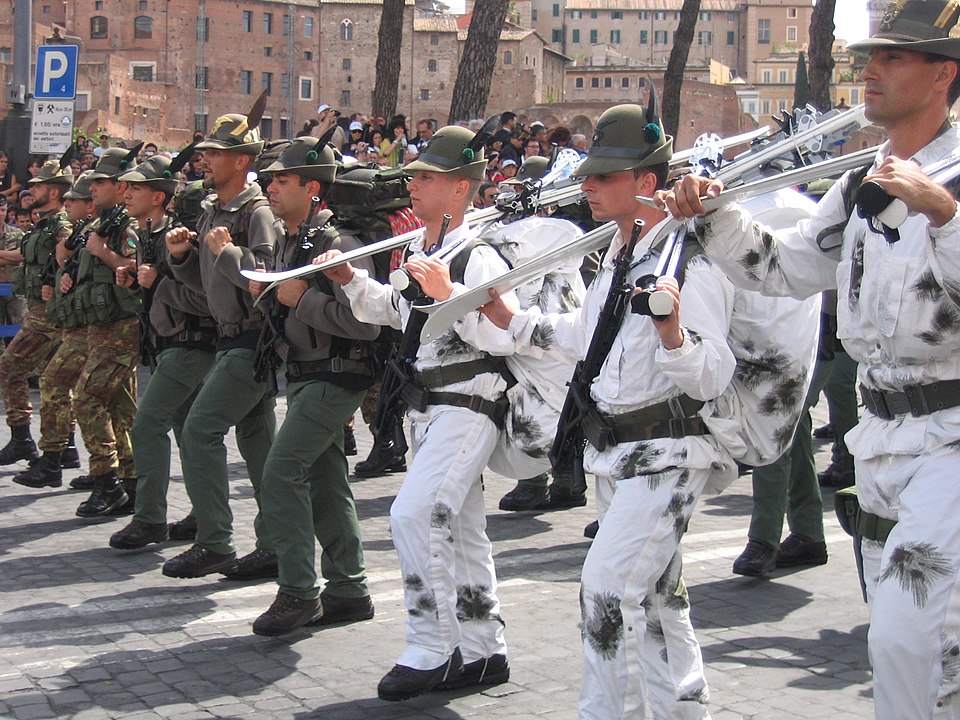
The Beretta AR-70/223 and its successor, the AR-70/90, form a powerful duo in firearms history, blending Italian design expertise with practicality and adaptability.

The AR-70/223, created in the late 1960s and unveiled in 1970, swiftly became a favored weapon for Italian Special Forces.

This gas-operated, self-loading rifle, using 5.56x45mm NATO rounds, offered both semi-automatic and fully automatic firing capabilities. Particularly, an uncommon variant with a folding stock, the Beretta SC-70/.223, was embraced by airborne Special Forces.

While the AR-70/223 laid the groundwork, it was the AR-70/90, introduced in 1985 and becoming standard issue by 1990, that cemented Beretta’s legacy in the Italian military.

The rifle AR-70/223 came in three versions: the standard assault rifle AR-70/223, the carbine SC-70/223 with the same barrel and folding butt, and the special carbine SCS-70/223 with a shortened barrel and folding butt.

A Squad Automatic variation of the basic 70/223 design, equipped with a heavy, quickly detachable barrel, was also developed but never mass-produced.The AR-70/90’s design improvements addressed the minor flaws of its predecessor and met the compatibility requirements with other NATO weapons.

One of the AR-70/90’s distinctive models, the SCP (Special Carabine Paratroopers) version,It featured a squad automatic version with a heavy, non-detachable barrel, and a detachable bipod known as AS-70/90.

The Beretta AR-70/90 serves as a standard shoulder arm in the Italian Army and is also marketed for export. Semi-automatic versions of both the 70/223 and 70/90 rifles are offered for police or civilian use.

Feeding AR-70/90 series weapons is done using STANAG (M16-type) compliant magazines. The ambidextrous magazine release button is positioned on both sides of the magazine housing in the lower receiver.

For AR-70/223 rifles, feeding is from proprietary 30-round magazines, with the release lever placed between the magazine and trigger guard. These features, coupled with a gas-operated action and a rotating bolt reminiscent of the venerable AK-47, ensure a well-rounded platform suitable for a variety of military needs.

Apart from their military origins, the AR-70/223 and the AR-70/90 have gained recognition in popular culture. These firearms have appeared in movies, anime, and video games, bridging the gap between actual military use and fictional stories.

Films like “Free Fire,” “Babylon A.D.,” and “John Wick: Chapter 2” feature these rifles prominently. Similarly, in animated series like “Gunslinger Girl” and “Blue Archive the Animation,” these Italian guns have been highlighted.

In video games, the AR-70/223 and AR-70/90 have appeared in titles such as “Cross Fire” and “Call to Arms,” enabling players to explore a digital rendition of the rifles’ features.

Whether serving as a focal point in game development or enhancing cinematic action scenes, the Beretta AR series has evolved beyond its utilitarian roots to attain cultural significance. The Beretta AR-70/223 and AR-70/90 have been used by Italian Special Forces and soldiers in Rome, as well as gaining popularity among audiences and gamers globally.

These rifles have made a lasting impact on military, entertainment, and popular culture, transitioning seamlessly from real-world scenarios to digital and cinematic realms.

